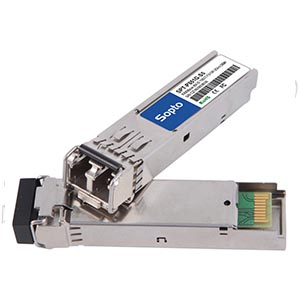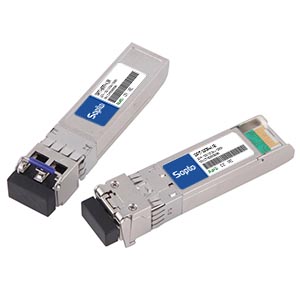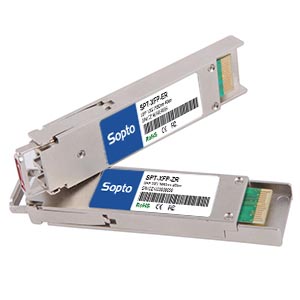- Fiber Optic Transceiver Module
- High Speed Cable
- Fiber Optical Cable
- Fiber Optical Patch Cords
- Splitter CWDM DWDM
- PON Solution
- FTTH Box ODF Closure
- PCI-E Network Card
- Network Cables
- Fiber Optical Adapter
- Fiber Optical Attenuator
- Fiber Media Converter
- PDH Multiplexers
- Protocol Converter
- Digital Video Multiplexer
- Fiber Optical Tools
- Compatible
- Can SFP+120KM be available? ...
- Why the price has so huge di...
- Can XFP transceiver modules ...
- Must optical fiber jumper be...
- Is there a module which can ...
- Can different brands SFP tra...
- How long will you change you...
- The difference between DDM S...
- Comparison of EPON and GPON
- Should we use 3rd party’s ...
- How to make differences betw...
- What is Drop Cable?
- Comparison of CWDM and DWDM ...
- GEPON Technology
- Differences of OM1, OM2, OM3...
- What is the armored fiber op...
- What is DAC cable?
- How to Choose A Right Fusion...
- Why Using a Compatible SFP O...
- Optical fiber transmission l...

The difference of SFP+, SFP and XFP, Advantages, Connection, Picture
XFP, SFP and SFP+ Comparison
| XFP | SFP | SFP+ | |
| Stands for | 10 Gigabit Small Form Factor Pluggable | Small Form-factor Pluggable | Small Form-factor Pluggable plus |
| Data rate | 10G | 155M/622M/ 1.25G 2.5G/3G/4.25G | 6G/8.5G/10G |
| Terms | Dual fiber Single Fiber/WDM CWDM DWDM | Dual fiber Single Fiber/WDM CWDM DWDM | Dual fiber Single Fiber/WDM CWDM DWDM |
Distance | 220m/300m/ 2km/10km/ 20km/40km/ 60km/80km/ 120km | 300m/2km/ 10km/15km/ 20km/40km/ 60km/80km/ 100km/120km/ 150km | 220m/300m/ 2km/10km/ 20km/40km/ 60km/80km |
| Wavelength | 850nm/1310nm/1550nm 1270nm/1330nm 1270nm-1610nm ITU17~ITU61 | 850nm/1310nm/1550nm 1310nm/1490nm/1550nm 1270nm-1610nm ITU17~ITU61 | 850nm/1310nm/1550nm 1310nm/1490nm/1550nm 1270nm-1610nm ITU17~ITU61 |
The differences between SFP and SFP+
SFP doesn't support 10G transmission data rate that means they can't be used in the same network.
From the price, SFP+ is a little bit more expensive than SFP.
SFP is based on IEEE802.3 and SFF-8472 while SFP+ is based on SFF-8431.
The Connection between XFP and SFP+
Both of them are 10G fiber optical modules and can connect with other type of 10G modules.
The size of SFP+ is smaller than XFP, thus it moves some functions to motherboard, including signal modulation function, MAC, CDR and EDC.
XFP is based on the standard of XFP MSA
SFP+ is compliance with the protocol of IEEE802.3ae, SFF-8431, SFF-8432.
SFP+ is the mainstream design.
| SFP/SFP+/XFP Connector Picture | ||
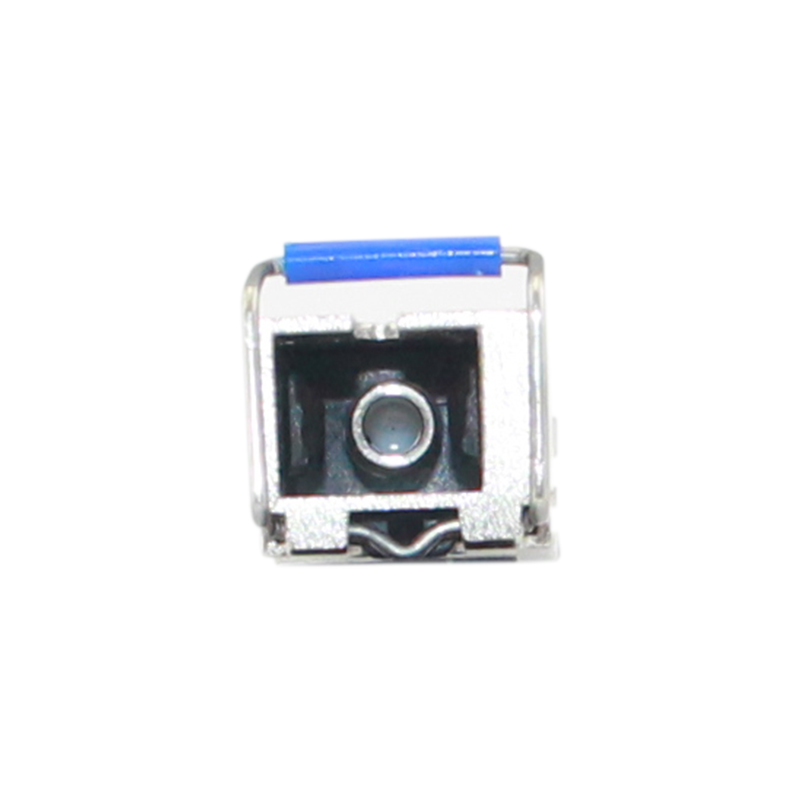 | 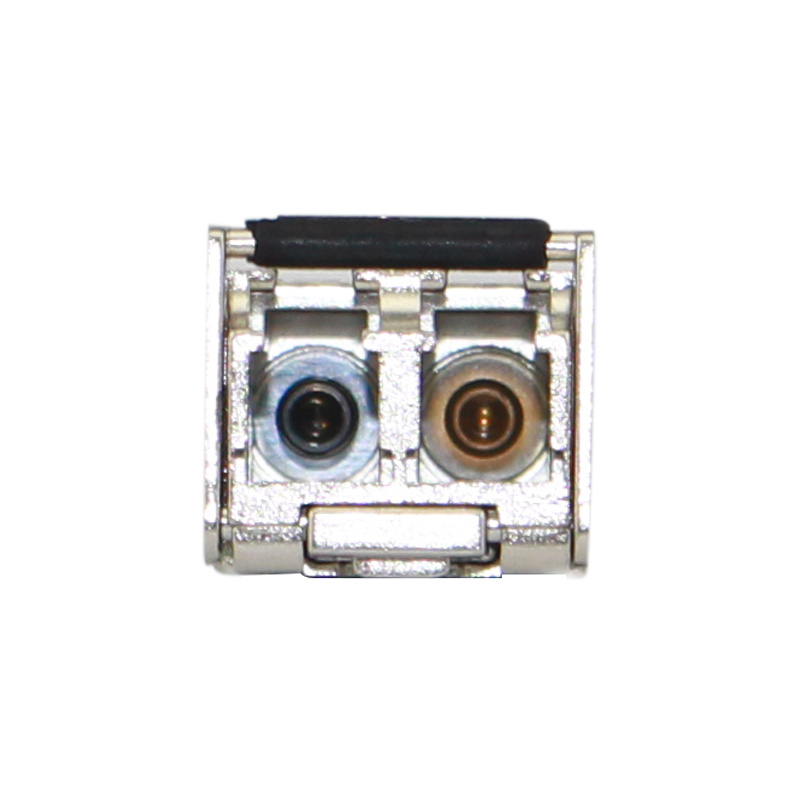 | 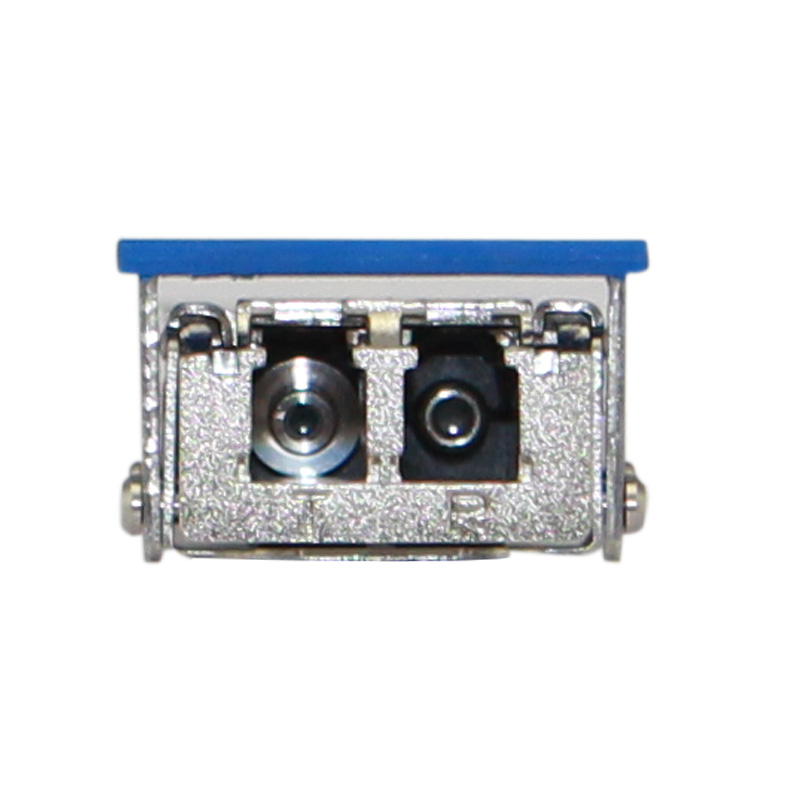 |
| SFP SC Connector | SFP/SFP+ LC Connector | XFP LC Connector |
The Advantages of SFP+ Module
SFP+ has a more compact form factor package than X2 and XFP.
It can connect with the same type of XFP, X2 and XENPAK directly.
The cost of SFP+ is lower than XFP, X2 and XENPAK.
| Transceiver | Data rate | Terms | Distance | Wavelengths |
| 155M/622M/ 1.25G/ 2.5G/3G/ 4.25G | 300m/2km/ | 850nm/1310nm/1550nm | ||
| 6G/8.5G/10G | 220m/300m/ 2km/10km/ 20km/40km/ 60km/80km | 850nm/1310nm/1550nm | ||
| 10G | 220m/300m/ 2km/10km/ 20km/40km/ 60km/80km/ 120km | 850nm/1310nm/1550nm ITU17~ITU61 |
Extended reading
Development of 10G Module
The 10G module has been developed from 300Pin. XENPAK, X2, XFP and finally achieve with the same size as SFP which can transmit 10G signals called SFP+.
SFP Definition
The small form-factor pluggable (SFP) is a compact, hot-pluggable transceiver used for both telecommunication and data communications applications. The form factor and electrical interface are specified by a multi-source agreement (MSA). It interfaces a network device motherboard (for a switch, router, media converter or similar device) to a fiber optic or copper networking cable. It is a popular industry format jointly developed and supported by many network component vendors.
SFP transceivers are designed to support SONET, gigabit Ethernet, Fibre Channel, and other communications standards. Due to its smaller size, SFP obsolesces the formerly ubiquitous gigabit interface converter (GBIC); the SFP is sometimes referred to as a Mini-GBIC although no device with this name has ever been defined in the MSAs.
XFP Definition
XFP modules are hot-swappable and protocol-independent. They typically operate at near-infrared wavelengths (colors) of 850 nm, 1310 nm or 1550 nm. Principal applications include 10 Gigabit Ethernet, 10 Gbit/s Fibre Channel, synchronous optical networking (SONET) at OC-192 rates, synchronous optical networking STM-64, 10 Gbit/s Optical Transport Network (OTN) OTU-2, and parallel optics links.
They can operate over a single wavelength or use dense wavelength-division multiplexing techniques. They include digital diagnostics that provide management that were added to the SFF-8472 standard.XFP modules use an LC fiber connector type to achieve higher density.
SFP+ Definition
The enhanced small form-factor pluggable (SFP+) is an enhanced version of the SFP that supports data rates up to 16 Gbit/s. The SFP+ specification was first published on May 9, 2006, and version 4.1 published on July 6, 2009.
SFP+ supports 8 Gbit/s Fibre Channel, 10 Gigabit Ethernet and Optical Transport Network standard OTU2. It is a popular industry format supported by many network component vendors. Although the SFP+ standard does not include mention of 16G Fibre Channel it can be used at this speed.
Besides the data rate, the big difference between 8G Fibre Channel and 16G Fibre Channel is the encoding method. 64b/66b encoding used for 16G is a more efficient encoding mechanism than 8b/10b used for 8G, and allows for the data rate to double without doubling the line rate. The result is the 14.025 Gbit/s line rate for 16G Fibre Channel.
In comparison to earlier XENPAK or XFP modules, SFP+ modules leave more circuitry to be implemented on the host board instead of inside the module. Consideration has to be given to whether the module is linear or limiting. Linear SFP+ modules are most appropriate for 10GBASE-LRM; otherwise, limiting modules are preferred.SFP+ also introduces Direct Attach for connecting two SFP+ ports without dedicated transceivers.



